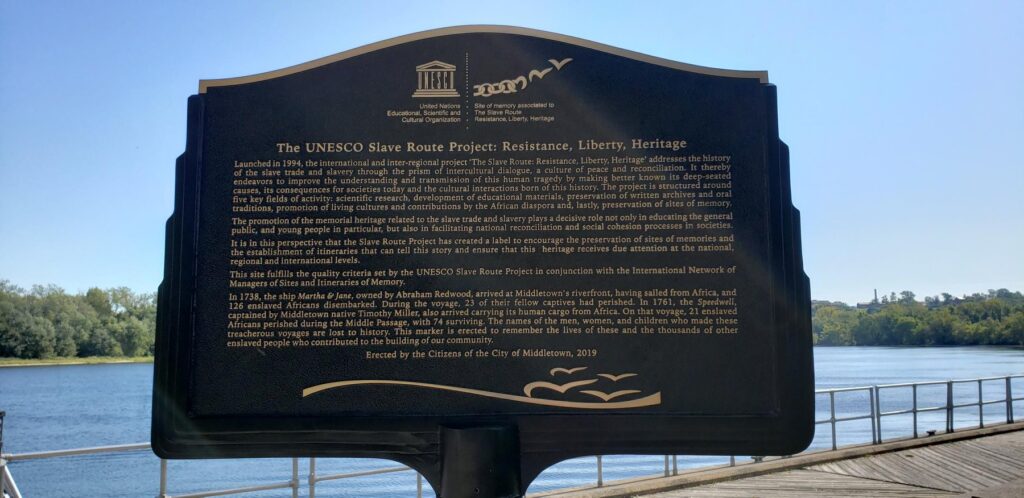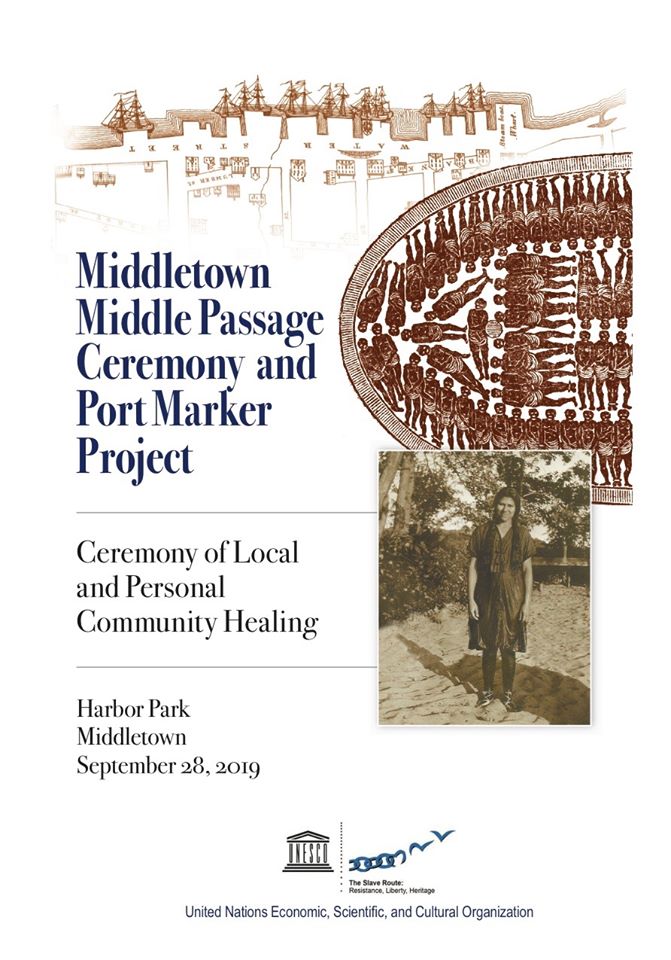This is the 2nd of our Wednesday series that highlights historic Middle Passage/UNESCO Site of Memory markers that have been installed since MPCPMP incorporated 9 years ago. MPCPMP is/was involved in the planning for the installation of most of these markers (indicated by an * next to the state name), and other organizations are/were responsible for some.
Connecticut*
While exact dates are unknown, Africans came to Connecticut soon after the first European settlements were founded. There is mention of African presence in Hartford from 1639 and in New Haven from 1644. The colony’s growing agricultural industry along with its established towns and small ports fostered the expansion of slavery. On the eve of the American Revolution, it had the largest number of enslaved people (6,464) in New England, with the largest increase coming during the period 1749-1774. Connecticut was principally involved with slavery by supplying food, animals, and materials to sugar plantations in the West Indies. In the 19th century, another African resource, ivory, became the basis for wealth in the town of Deep River.
In the 1700s, two vessels sailed into Middletown’s riverfront with their human cargo stolen from the African continent. New London disembarked 74 captive Africans, and six ships left from there to engage in the trans-Atlantic trade. It is probably best known for its connection to the Amistad in 1839. There is a record of the Polly departing from New Haven for Africa in 1791, although the outcome of the voyage is unknown.
On September 28, 2019, Middletown dedicated its historic marker to remember and honor these and other enslaved Africans and their descendants who played a crucial role in the building of Middletown and the state.
Please follow this link to read more about Connecticut and slavery and find resources for additional information: http://slavenorth.com/connecticut.htm


